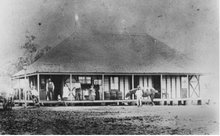Between 1850 and 1882, all of Germany was in a state of change. According to David Blackbourn, the process of “making Germans” was not the dramatic event preferred by historians, but a series of incremental, administrative changes that centralised power in Berlin. Banknotes, postage stamps, a flag and elections were the tools of change, rather than brute force. Better economic opportunities and more jobs were also the result of unification.
The changes were partly reflected in a redefinition of class. Blackbourn refers to the rise of the “mittelstand” or “middle estate” as a distinct lower middle class or what we would call today “small businesspeople.” These petty bourgeoisie were different from the bourgeoisie proper which were burghers (town citizens) and usually merchants rather than shopkeepers.
Blackbourn specifically identifies bakers as being on the boundary between petty and full bourgeoisie in that they were shopkeepers who saw their businesses in dynastic terms. These of the mittelstand had some capital and their own means of production yet still depended on family labour. It was a very fluid social class with some rising and some falling and the whole class acting as a “social buffer zone” between the middle and working classes.
I don’t think I will be writing about class in the book as young readers don’t, or shouldn’t, have an understanding of such things. Australian and American readers in particular don’t perceive themselves in terms of class, though of course such distinctions still exist. However, it is useful to read of these things in order to be able to place the Jaeckels in their context as small businesspeople navigating their way in a period of immense social, political and administrative change.
Monday, 4 June 2007
Subscribe to:
Post Comments (Atom)

No comments:
Post a Comment